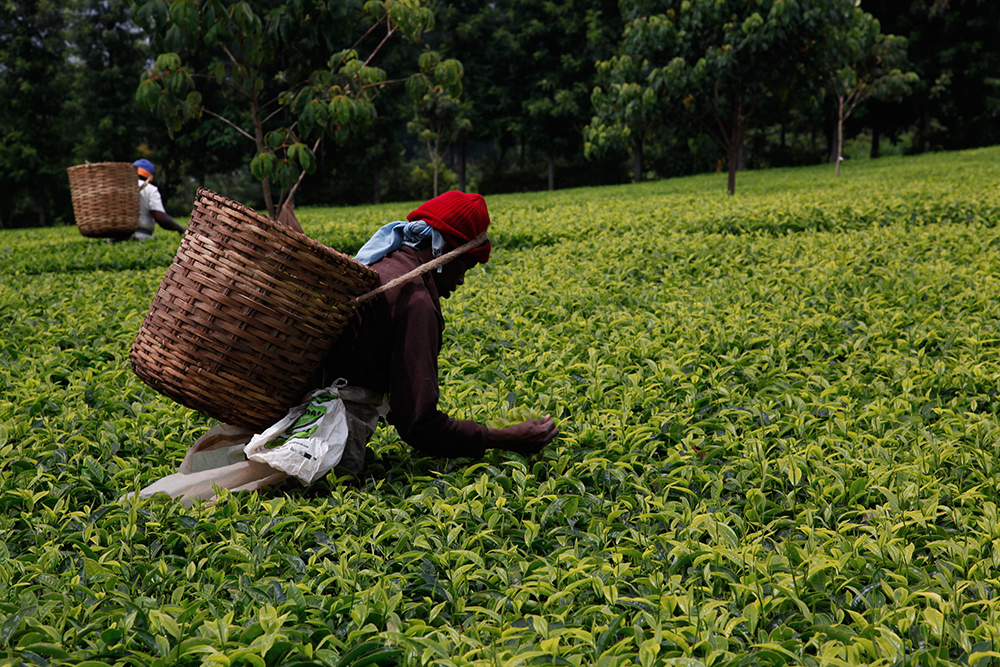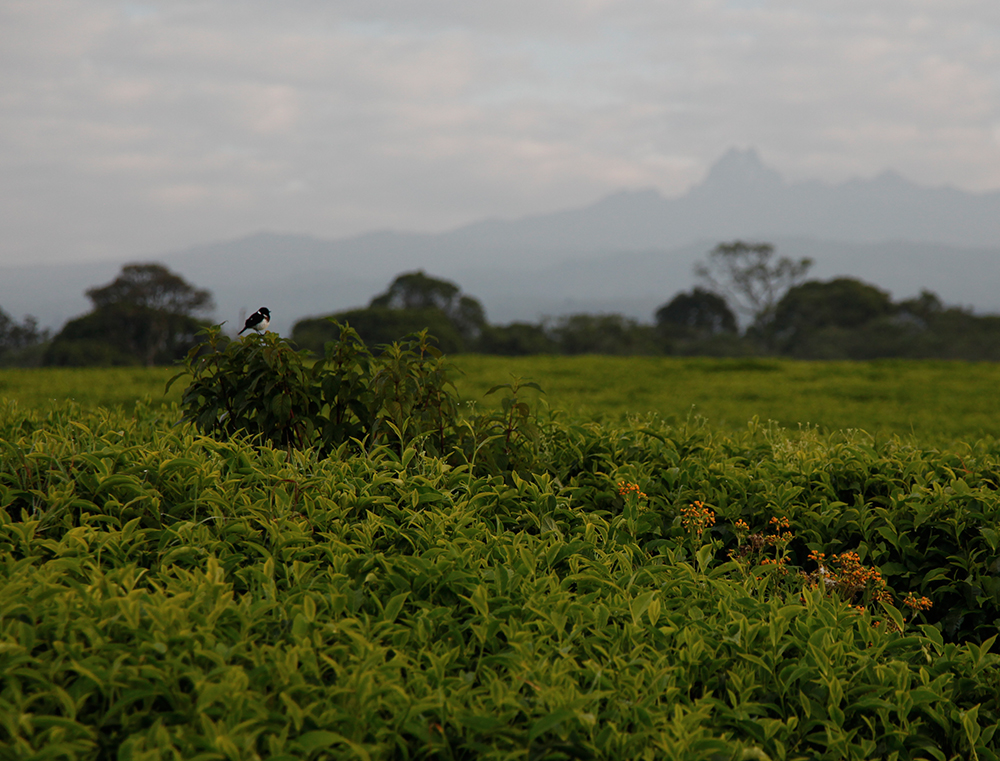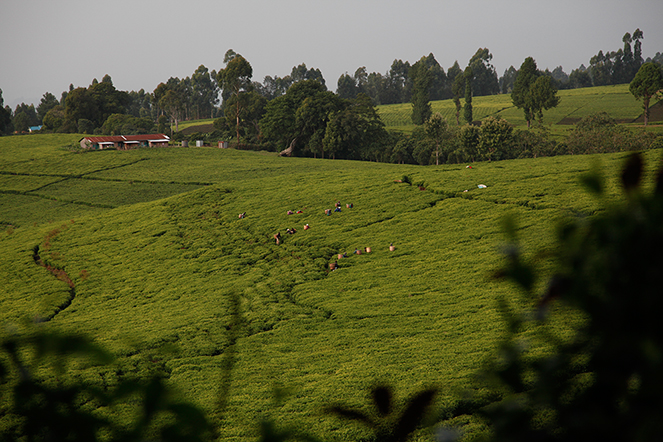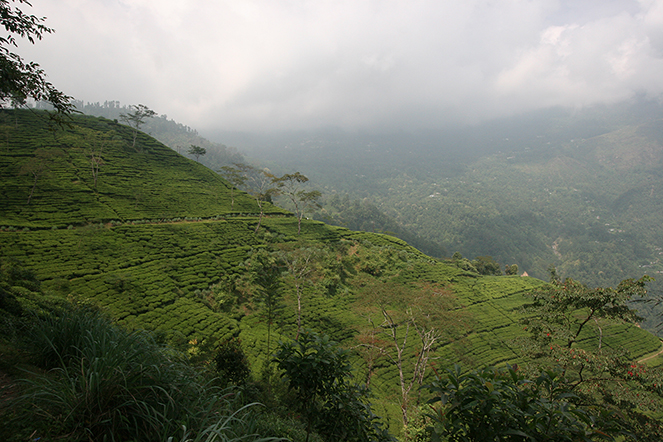As soon as the tea leaves are picked, they must be taken to the factory as quickly as possible. The piles of leaves must not be allowed to ferment. Accidental fermentation is known to affect the quality of the tea. Here, in Kenya, they use very large baskets that are well ventilated so that the plucked leaves have room to breathe.
ARCHIVE FOR February 2016
A tea plantation in Kenya
Kangaita in Kenya is one of the country’s few plantations that produce high-quality teas; in other words, whole-leaf. The national park of Mount Kenya borders the garden and many birds flit about the tea plants. On the other hand, elephants are not welcome, because of the damage they cause.
Here, you can see the peaks of Mount Kenya in the distance: the highest is 5,199 metres.
Tea from the slopes of Mount Kenya
Kenya is one of the biggest exporters of tea on the planet. Sadly, most of its tea is CTC (Cut, Tear, Curl) – the type used in tea bags. But that should not prevent us from seeking out, at higher altitudes, small producers aiming for quality. So here I am, on the slopes of Mount Kenya, tasting some magnificent black teas. It goes to show, one should not rush to judge: just as some great “appellations” occasionally throw up unpleasant surprises, I sometimes come across passionate people who have acquired serious expertise, in less well-known places.
Darjeeling: a tea that should not be bought blindly
Around the world, much more Darjeeling tea is sold than is actually produced in Darjeeling. There are also considerable differences between gardens in terms of quality, and considerable differences in quality within the same garden. These differences are due to major variations in weather (a garden might produce excellent teas in April, for example, which is impossible in July during the monsoon) and because the same plantation will have tea plants growing at widely varying altitudes. In Tukvar, for example, 1,000 metres in altitude separates the top of the highest plot and the lowest point on the plantation.
So we must be careful when we buy Darjeeling teas, and we should never rely on the name alone, however prestigious it may be. We should also bear in mind that plantations situated on the plains, of mediocre quality, sit alongside those within the appellation, and human nature being what it is, there is a great temptation to sell Terai teas under the Darjeeling name.
Connoisseurs of first-flush Darjeelings must wait a few more weeks to try the new spring harvest. In this region of the world, tea plants are dormant between November and February, as the soil is too cold for Camellia sinensis.




